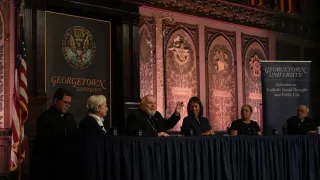December 15, 2015
PRO 140 Could Stop Graft Vs. Host Disease in Bone Marrow Transplants
EDGE null READ TIME: 4 MIN.
CytoDyn Inc., a biotechnology company focused on the development of new therapies for combating HIV infection, announced that recent Company research has produced data to expand the potential clinical indications for PRO 140 for autoimmune diseases. Accordingly, the Company recently filed with the FDA a new IND (Investigational New Drug) application and a full protocol for a Phase 2 clinical trial.
Furthermore, CytoDyn intends to file for Orphan Drug Designation for a Graft versus Host Disease ("GvHD") indication for patients requiring bone marrow transplants in the near future. CytoDyn currently is in a Phase 3 trial with its lead product candidate, PRO 140, for the treatment of HIV and, if successful, anticipates approval in the first half of 2017.
"GvHD can result from cancer-fighting bone marrow transplants. This new PRO 140 indication, blocking the occurrence of GvHD following bone marrow transplants, expands PRO 140's capabilities beyond standard HIV therapies. The Company also believes that the addition of the GvHD indication in PRO 140 could expand the market size profile. We plan to commercialize the product bringing it to the public in 2017 following the successful Phase 3 study," comments Nader Pourhassan, CEO, CytoDyn Inc. developer of PRO-140.
The Company has selected a transplantation indication called GvHD as its first non-HIV clinical indication. The CCR5 receptor, the target for PRO 140, is an important mediator of GvHD, especially in the organ damage that is the usual cause of death. The only approved CCR5 inhibitor, Maraviroc, is currently in a Phase 2 study in GvHD and results are expected in 2016. The Company believes that PRO 140 has significant advantages over Maraviroc in more favorable dosing and pharmacokinetics, less toxicity and side effects, and no direct stimulation (agonist activity) of the CCR5 receptor. CytoDyn also believes if the data is positive, it intends to file for breakthrough designation for this indication.
PRO 140 is a monoclonal antibody that targets the chemokine receptor, CCR5, expressed on a variety of cells that play a central role in inflammatory responses. PRO 140 binds to this receptor in a way that prevents HIV from using it as an entry gateway without activating the immune function of the receptor. The Company's recent data indicates that PRO 140 interferes with (antagonist activity) activation of the receptor by its ligand, named CCL5. The CCL5 is a chemokine mediator which has been shown to be a central figure in many inflammatory disease processes and blocking its interaction with CCR5 is believed to be of therapeutic benefit.
This new indication expands PRO 140's capabilities beyond HIV therapies. The Company also believes that the addition of GvHD indication, could expand the market size profile for PRO 140.
Graft-versus-host disease (GvHD) is a complication that can occur after a stem cell or bone marrow transplant. With GvHD, the newly transplanted donor cells attack the transplant recipient's body. GvHD may occur after a bone marrow or stem cell transplant in which an individual receives bone marrow tissue or cells from an unrelated donor. This type of transplant is called allogeneic.
The new, transplanted cells regard the recipient's body as foreign. When this happens, the newly transplanted cells attack the recipient's body. GvHD does not occur when an individual receives his or her own cells during a transplant.
Before a transplant, tissue and cells from possible donors are tested to determine how closely they match the person having the transplant. GvHD is less likely to occur, or symptoms will be milder, when the match is close. The chance of GvHD is around 30-40 percent when the donor and recipient are related and around 60-80 percent when the donor and recipient are not related.
There are two types of GvHD: acute and chronic. Symptoms in both acute and chronic GvHD range from mild to severe. Acute GvHD usually happens within the first six months after a transplant. Chronic GvHD usually starts more than three months after a transplant, and can last a lifetime.
In the United States, in 2011, over 7,500 unrelated donor bone marrow transplants were performed and another 10,000 conducted outside the U.S. One-year survival is now approximately 60 percent with the most common causes of death being relapse or GvHD. The market in the U.S. is expected to reach $400 million in the next several years.
For more information, visit www.cytodyn.com.






